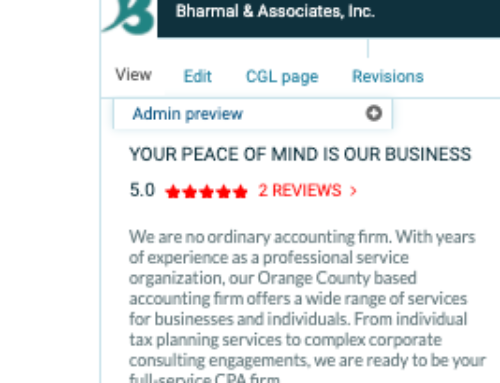Can You Deduct Assisted Living Expenses?
Watch your wallet: the median cost in 2018 for an assisted living facility was $48,000 and over $100,000 for nursing home care.
If you could deduct these expenses, you’d substantially reduce your income tax liability—possibility down to $0—and dramatically reduce your financial burden from these costs. As you might expect, the rules are complicated as to when you can deduct these expenses. But I’m going to give you some tips to help you understand the rules.
Medical Expenses in General:
On your IRS Form 1040, you can deduct expenses paid for the medical care of yourself, your spouse, and your dependents, but only to the extent the total expenses exceed 10 percent of your adjusted gross income. Medical care includes qualified long-term care services. Assisted living and nursing home expenses can be qualified long-term care expenses depending on the health status of the person living in the facility.
If you operate a business, your business could establish a medical plan strategy that could make the medical expenses business deductions for your business.
Qualified Long-Term Care Services
The term “qualified long-term care services” means necessary diagnostic, preventive, therapeutic, curing, treating, mitigating, and rehabilitative services, and maintenance
or personal care services, which
• are required by a chronically ill individual, and
• are provided pursuant to a plan of care prescribed by a licensed health care practitioner.
Chronically Ill Individual
A chronically ill individual is someone certified within the previous 12 months by a licensed health care practitioner as
1. being unable to perform, without substantial assistance from another individual, at least two activities of daily living for a period of at least 90 days due to a loss of functional capacity;
2. having a similar level of disability (as determined under IRS regulations prescribed in consultation with the Department of Health and Human Services) to the level of disability described in the first test; or
3. requiring substantial supervision to protect the individual from threats to health and safety due to severe cognitive impairment.
A licensed health care provider is a doctor, a registered professional nurse, a licensed social worker, or another individual who meets IRS requirements.
Activities of Daily Living Test:
For someone to be a chronically ill individual, at least two of the following activities of daily living must require substantial assistance from another individual:
• Eating
• Toileting
• Transferring
• Bathing
• Dressing
• Continence
Substantial assistance is both hands-on assistance and standby assistance:
• Hands-on assistance is the physical assistance of another person without which the individual would be unable to perform the activity of daily living.
• Standby assistance is the presence of another person within arm’s reach of the individual that’s necessary to prevent, by physical intervention, injury to the individual while the individual is performing the activity of daily living.
Examples of standby assistance include being ready to
• catch the individual if the individual falls while getting into or out of the bathtub or shower as part of bathing, or
• remove food from the individual’s throat if the individual chokes while eating.
Cognitive Impairment Test:
Severe cognitive impairment is a loss or deterioration in intellectual capacity that is comparable to, and includes, Alzheimer’s disease and similar forms of irreversible dementia, and measured by clinical evidence and standardized tests that reliably measure impairment in the individual’s short- or long-term memory; orientation as to people, places, or time; and deductive or abstract reasoning.
Substantial supervision is continual supervision (which may include cuing by verbal prompting, gestures, or other demonstrations) by another person that is necessary to protect the severely cognitively impaired individual from threats to his or her health or safety (such as may result from wandering).





